 As sub-freezing temperatures lay their cold paws across the landscape and veils of windborne snow course endlessly up hill and down dale, the gardener grumpily endures nature's enforced season of dormancy upon those who would till. Just as all growing things must pause and wait out winter's months of quietude and inactivity, so must gardeners. Hankering after some means of keeping one's hand in and being productive during the mid-winter exile from the garden, plans are drawn up for the pruning of the two-year old Fuji apple tree.
As sub-freezing temperatures lay their cold paws across the landscape and veils of windborne snow course endlessly up hill and down dale, the gardener grumpily endures nature's enforced season of dormancy upon those who would till. Just as all growing things must pause and wait out winter's months of quietude and inactivity, so must gardeners. Hankering after some means of keeping one's hand in and being productive during the mid-winter exile from the garden, plans are drawn up for the pruning of the two-year old Fuji apple tree.Very little pruning has been practiced in my garden, to date. The roses do get lopped back by about a third early each spring, as this is universally recommended as essential for their health and bloom. A white lilac that hasn't yet deigned to flower in five years had about a third of its young branches cut to the ground last summer, again because such pruning is supposed to bring bloom. In general, however, the shrubs and trees grow on uninterrupted, and may ascend to whatever width and height they are comfortable with, as the bigger they get, the happier the garden and its wildlife appear to be. And shrubs and trees alike are all still in their youth and smallish in size, pruning more than broken or crossed branches isn't needed at this juncture.
Except, apparently, for the apple tree. A radio garden show happened to mention that apple trees must always be pruned in their first years or they will go into a long pout of poor growth and delayed fruiting. This was news to me, but a little research indicated that indeed, the consensus among farm and garden arborists held pruning to be essential for apple trees (though not for other fruit-bearers, like cherry). The extension service at Tennessee's Clemson University, at www.hgic.clemson.edu, puts up a very broad and deep body of information on home garden topics, with detailed factsheets on many matters and species from peonies to pruning.
To begin, its necessary to remove all but one “leader” or central branch on the apple tree, cutting competing leaders back close to a bud and to their starting point. Looking at the little Fuji, it does in fact have three or four about equally tall central branches vying for the role of leader, so all but the biggest and best shaped will have to come off.
The leader central trunk then needs to be “headed back” by pruning about one-third off the top, again making a cut close to a bud. All downward pointing branches and suckers (branches that point straight up) must be removed, cutting just above the “collar” of raised bark that circles the branch where it emerges from the tree trunk. Branches with narrow crotches and those at less than a 45-degree angle from the trunk also get sliced off above their collars.
The Fuji in the garden, now that one knows what to look for, actually has every single one of these reportedly inferior, inhibiting branch growths. Perhaps that partially explains its production of just one lone apple its first year in the garden, and one lone apple again last summer, its second year.
Finally, the tree should be relieved of all but three-to-six scaffolds or side branches, evenly spaced around the central trunk. The cut limbs must be removed from the area, and burned or recycled in a distant brush pile, as left as layabouts on the ground they make very desirable residences for insects and diseases which feed upon and harm fruit trees.
Not until February 14 to 18 can this pruning plan be carried out. That, according to the Blum Farmer's Almanac (available at most grocery stores or www.blumsalmanac.com), is late enough in the winter dormant period to not be facing too many more weeks of freeze, yet before new spring growth will have begun. Those particular days in February mark a phase when the moon is waxing (or increasing in size), and the planets are best aligned to allow pruning to promote, rather than discourage growth. The Farmer's Almanac maintains that pruning during a waning period of the moon will certainly decrease growth, why they do not say. The waxing moon building toward full exerts a stronger gravitational pull upon the earth, its tides, tree sap and other energy fields, and thus probably also beckons forth growth spurts. The full moon, after all, which exercises the maximum gravitational pull each month, always brings the most births of human babies, as well.
Plotting and planning, researching and ruminating, gazing out the windows or braving the elements to hike through the snow drifts for closer inspections of the drowsing garden, so do the frustrations of not gardening get somewhat mollified. So do the days and weeks of January, the most unforgiving month, tick more usefully by. Or as Edward A. Bowles, English gardener and author, so eloquently states, “if only the gardener will plant enough plants of the most different types and habits procurable, there ought to be never a day in which he cannot find some pleasure...no minute of the daylight hours in which there is no interesting and health-giving work to be done.”
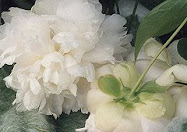
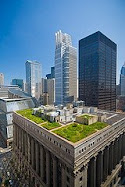

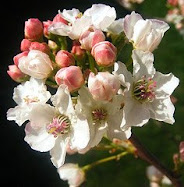
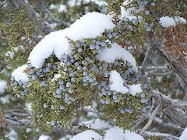


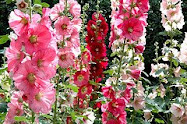

No comments:
Post a Comment